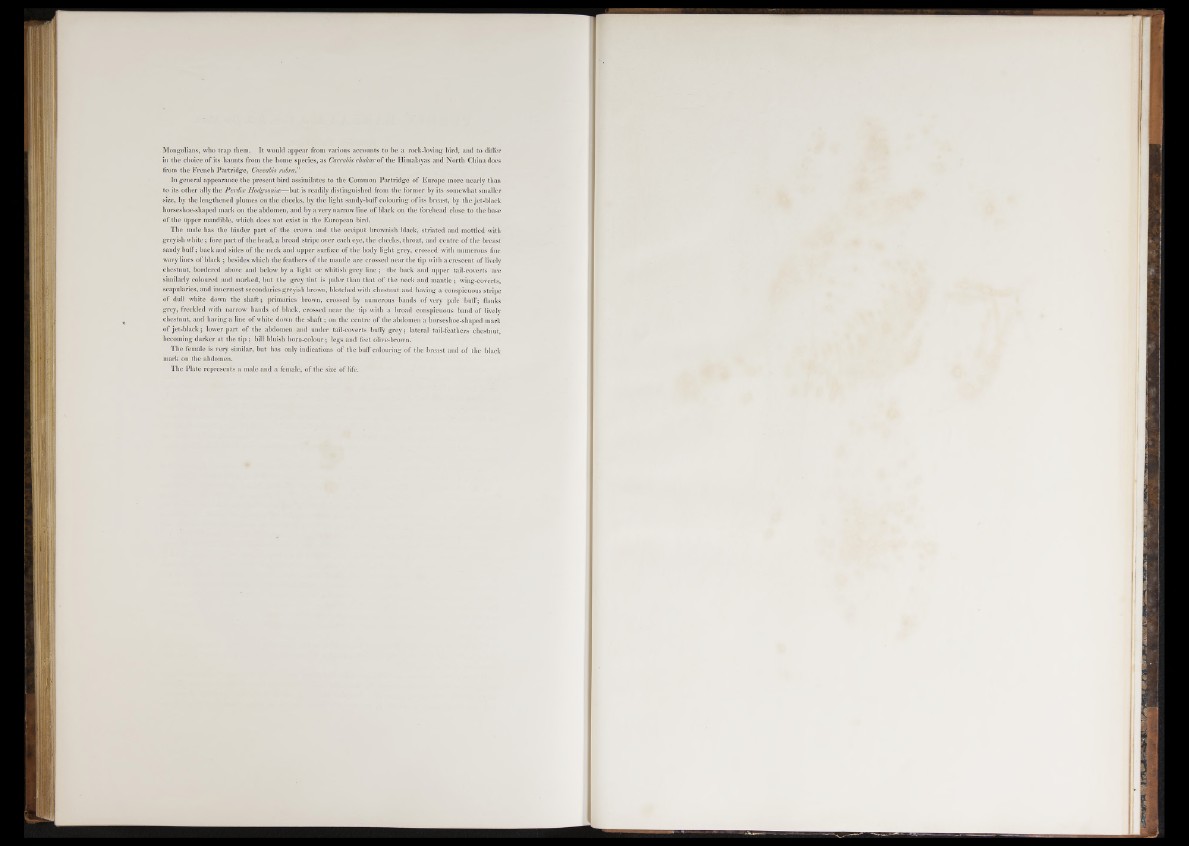
Mongolians, who trap them. It would appear from various accounts to be a rock-loving bird, and to differ
in the choice o f its haunts from the home species, as Caccabis chukar o f the Himalayas and North Chiua does
from the French Partridge, Caccabis rubra”
In general appearance the present bird assimilates to the Common Partridge of Europe more nearly than
to its other ally the Perdicc Hodgsonicc—but is readily distinguished from the former by its somewhat smaller
size, by the lengthened plumes on the cheeks, by the light sandy-buff colouring of its breast, by the jet-black
horseshoe-shaped mark on the abdomen, and by a very narrow line of black on the forehead close to the base
o f the upper mandible, which does not exist in the European bird.
The male has the hinder part of the crown aud the occiput brownish black, striated and mottled with
greyish white; fore part of the head, a broad stripe over each eye, the cheeks, throat, and centre of the breast
sandy buff; back and sides of the neck and upper surface of the body light grey, crossed with numerous fine
wavy lines of black ; besides which the feathers of the mantle are crossed near the tip with a crescent of lively
chestnut, bordered above and below by a light or whitish grey line ; the back and upper tail-coverts are
similarly coloured and marked, but the grey tint is paler than that of the neck and mantle ; wing-coverts,
scapularies, and innermost secondaries greyish brown, blotched with chestnut and having a conspicuous stripe
of dull white down the shaft; primaries brown, crossed by numerous bands of very pale buff; flanks
grey, freckled with narrow bands of black, crossed near the tip with a broad conspicuous band of lively
chestnut, and having a line of white down the shaft; on the centre of the abdomen a horseshoe-shaped mark
of jet-black; lower part of the abdomen and under tail-coverts bufly grey; lateral tail-feathers chestnut,
becoming darker at the tip ; bill bluish horn-colour; legs and feet olive-brown.
The female is very similar, but has only indications of the buff colouring of the breast and of the black
mark on the abdomen.
The Plate represents a male and a female, of the size of life.